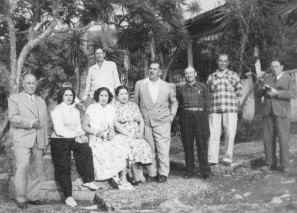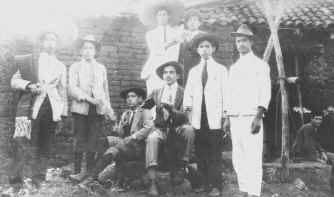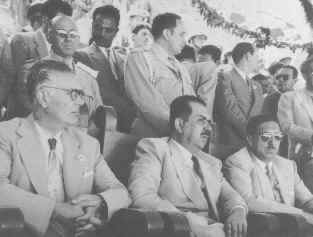 The Failure of the Cardenista Project in Guaracha
The Failure of the Cardenista Project in Guaracha The Failure of the Cardenista Project in Guaracha
The Failure of the Cardenista Project in Guaracha(right) Lázaro Cárdenas and his brothers
The expropriation of the Guaracha hacienda was a process negotiated behind the scenes with the former owner, designed to create a show-case for Cárdenas’s new agrarian policy. The landlord abandoned the estate completely, selling not merely his residual private property but also the estate’s sugar mill to the government. This rare experiment in running an entire agro-industrial enterprise as a peasant cooperative was an unmitigated disaster which ended in a parcelling out of the land to individual beneficiaries in 1940, and definitive closure of the sugar mill a few years later.
 (left) Dámaso Cárdenas, Lázaro's brother
(left) Dámaso Cárdenas, Lázaro's brother
Peasant resistance to collective cultivation was only one facet of the problem, although the fact that most of the land which had previously belonged to the estate was used to create individual rather than collective ejidos was not lost on the ex-peons, who were dragooned into the cooperative without even their own leaders being informed of the President’s plans before they were implemented. The bureaucracy brought in to oversee the management of the mill in this authoritarian social revolution from above proved incapable of communicating culturally or politically with their recalcitrant peasant clients, and their administration through carefully selected intermediaries helped to foster a corruption which rapidly bankrupted the enterprise.
 ( left) Dámaso with friends in Jiquilpan as a young man
( left) Dámaso with friends in Jiquilpan as a young man
But even this was more a symptom than a cause of the disaster, which seems to have been deliberately engineered by an unholy alliance between the President’s younger brother Dámaso, now the undisputed regional political boss, and private landowners in Jiquilpan who coveted the former hacienda’s irrigation water. The next phase of the region’s agrarian history, which spanned the period from the Forties until the late Sixties, can be summed up as one of exploitation of the ejidos by a new regional agrarian bourgeoisie which was a product of the changed balance of class power produced by the Revolution.

(right) After leaving the Presidency, Lázaro Cárdenas became president of the Tepalcatepec River Basin Development Commission, which diverted his attention from the Ciénega to the Tierra Caliente of Michoacán.